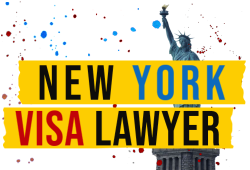Immigration Law Wiki
“Credible” and “Reasonable” Fear Interviews
Fear interviews are part of the expedited removal process. When a person is put into the expedited removal process, if they express a fear of returning to their home country or request to seek asylum, they are first screened to see if they could establish that they have a fear of persecution or torture.
Generally speaking, there are two “levels” of fear interviews, most commonly referred to as “credible fear” and “reasonable fear.” A person is said to have a “credible fear” if they can demonstrate a “significant possibility” that they will be able to establish eligibility for asylum or withholding of removal under the Immigration and Nationality Act or withholding of removal or deferral of removal under the Convention Against Torture. A person establishing a “reasonable fear” of persecution or torture has to demonstrate a higher likelihood that they would be eligible for relief from removal.
The fear screening process has been periodically altered by new rules issued by various presidential administrations. Those rules are also often the subject of litigation, making the exact process an individual is subjected to (including the standard of proof needed to establish a “credible” fear) subject to regular change. Additionally, many of the rules are applied only to a subset of individuals, often seemingly at random, due to changing logistical, diplomatic, or humanitarian factors. Therefore, the credible and reasonable fear interview process may be applied differently to different people depending on things such as when they arrived at the border, where they arrived, what country they arrived from, whether they entered at a port of entry or between ports of entry, and other considerations.

At the credible or reasonable fear interview, if an individual is found by the asylum officer to have met the standard applied to them, they are then referred to proceedings where they can submit an application for asylum or other similar protections. Usually, this is done via a referral to an immigration court, where a person is put in removal proceedings initiated with a Notice to Appear. Some pilot programs such as that created by the Asylum Processing Rule created an alternative venue, where people would have their full asylum cases reviewed by an asylum officer rather than an immigration judge, on a significantly truncated timeline. If the asylum officer determines the person did not establish either credible or reasonable fear, their expedited removal order stays in place. Before removal, the individual may request review of the fear determination by an immigration judge. If the immigration judge overturns a negative fear finding, the individual is treated as if they passed their fear interview and is placed in further removal proceedings through which the individual can seek protection from removal, including asylum. If the immigration judge upholds the negative finding by the asylum officer, the individual will be removed from the United States.

In Fiscal Year (FY) 2023 (a year in which the Title 42 pandemic border expulsion policy was in effect for eight out of 12 months), USCIS found 53,965 individuals to have credible fear. These individuals, many of whom were detained during this screening process, will be afforded an opportunity to apply for asylum defensively and establish that they meet the refugee definition.
The number of credible fear cases has skyrocketed since the procedure was implemented—in FY 2009, USCIS completed 5,523 cases. Case completions reached an all-time high in FY 2023 at 148,440. In FY 2023, two-thirds of which occurred during Title 42, USCIS found 1,950 individuals to have reasonable fear.
